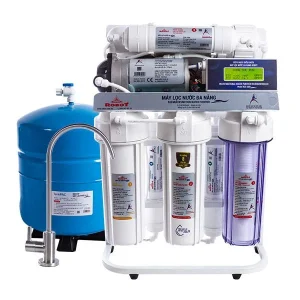Infrared Stove: What Is It? How It Works, Applications, and Safe Usage Tips

An infrared stove is an innovative cooking appliance that uses infrared radiation to generate heat, offering a more efficient and precise cooking experience compared to traditional cooking methods. This type of stove has gained popularity due to its energy efficiency, quick heating, and ease of use. In this article, we will explore what an infrared stove is, how it works, its practical applications, and tips for safe usage.
1. What Is an Infrared Stove?
An infrared stove is a cooking device that uses infrared radiation to directly heat cookware, rather than relying on conventional methods like gas or electric heating. Infrared stoves typically have a ceramic or quartz glass surface that emits infrared waves, which heat up the cookware placed on it. These stoves are known for their fast heating times, energy efficiency, and precise temperature control.
Common Types of Infrared Stoves:
- Countertop Infrared Stoves: These are standalone units that can be placed on a countertop for easy use. They are ideal for small kitchens, dorm rooms, or additional cooking surfaces.
- Built-In Infrared Stoves: These are integrated into kitchen countertops or cooking ranges, offering a sleek and modern design. They are typically part of high-end cooking systems.
- Portable Infrared Cookers: These are compact, easy-to-use, and perfect for on-the-go cooking, outdoor grilling, or in RV kitchens.
Benefits of Infrared Stoves:
- Energy Efficiency: Infrared stoves directly heat the cookware, which reduces energy waste and allows for faster cooking.
- Precise Temperature Control: Infrared stoves provide better control over heat, enabling users to cook food more consistently.
- Fast Heating: These stoves heat up quickly, making them an ideal choice for those who want to save time in the kitchen.
2. How Does an Infrared Stove Work?
Infrared stoves use infrared radiation to heat cookware. This process is quite different from traditional electric or gas stoves, which heat the surrounding air or the burner element. Here’s how it works:
Key Components of an Infrared Stove:
- Ceramic or Quartz Surface: Infrared stoves typically have a ceramic or quartz glass surface that is heated by infrared light. This surface absorbs and emits infrared radiation.
- Heating Element: Beneath the surface, there is a heating element that generates infrared radiation when it is powered on. The radiation emitted from the element heats the cookware directly.
- Cookware: The cookware used with infrared stoves must be heat-conductive and flat to ensure even heat distribution. Common materials include stainless steel, cast iron, and certain types of aluminum.
- Control Panel: Infrared stoves are equipped with a control panel that allows users to set the temperature or cooking time. Many models feature touch-screen controls for added convenience.
The Cooking Process:
- Infrared Radiation: When the stove is turned on, the heating element produces infrared radiation. This radiation is absorbed by the ceramic or quartz surface, which then emits heat.
- Direct Heating of Cookware: The infrared heat is directly absorbed by the cookware placed on the stove, causing the pot or pan to heat up.
- Cooking Food: The heat from the cookware is transferred to the food, cooking it efficiently. The heat is distributed evenly, allowing for faster and more consistent cooking.
3. Applications of Infrared Stoves
Infrared stoves can be used in various settings, from home kitchens to commercial environments. Here are some common applications:
Residential Use:
- Home Kitchens: Infrared stoves are becoming increasingly popular in modern kitchens due to their fast heating times and energy efficiency. They are ideal for homeowners who want a more precise cooking experience and an easy-to-clean surface.
- Small Kitchens and Apartments: Due to their compact design, infrared stoves are perfect for small kitchens or apartments where space is limited. They provide an efficient cooking solution without occupying much space.
- Outdoor Cooking: Portable infrared cookers are a great option for outdoor cooking. They can be used in camping, RVs, or during backyard barbecues, offering a convenient and fast way to cook.
Commercial Use:
- Restaurants and Catering: Many restaurants and catering services are using infrared stoves because of their speed and energy efficiency. These stoves allow chefs to cook food quickly and consistently, which is crucial in busy commercial kitchens.
- Food Trucks: Infrared stoves are often used in food trucks because they heat up quickly and are energy-efficient, making them ideal for fast-paced food preparation.
- Buffet Services: Infrared stoves can be used in buffet lines to keep food warm and at the correct serving temperature, ensuring a high-quality dining experience for guests.
4. How to Use an Infrared Stove Safely
While infrared stoves are easy to use, following safety guidelines is essential to ensure their safe operation and long lifespan. Here are some important tips:
Installation and Setup:
- Proper Placement: Place the infrared stove on a flat, stable surface. Make sure there is enough space around the stove for proper ventilation. Avoid placing it near heat-sensitive materials.
- Cookware Compatibility: Ensure that the cookware you use is suitable for infrared cooking. Flat-bottomed, heat-conductive pots and pans made of stainless steel, cast iron, or aluminum are ideal.
- Electrical Safety: Plug the infrared stove into a properly grounded outlet. Avoid using extension cords or overloading electrical outlets to prevent overheating or electrical hazards.
Cooking Tips:
- Temperature Control: Use the control panel to adjust the heat to your desired cooking temperature. Infrared stoves offer precise temperature control, which is great for recipes that require consistent cooking.
- Avoid Overheating: While infrared stoves cook quickly, it is important to avoid overheating the cookware. Monitor the cooking process, and adjust the temperature as necessary.
- Preheating: Preheat the stove before placing the cookware on it. Most infrared stoves heat up rapidly, so it usually only takes a few minutes to reach the desired temperature.
Regular Maintenance:
- Cleaning the Cooktop: After cooking, allow the stove to cool before cleaning it. Wipe the surface with a soft cloth and a mild detergent. Avoid using abrasive cleaning products that could scratch the glass surface.
- Prevent Spills: Be mindful of spills, as they can cause stains or burn onto the surface. Clean any spills immediately after the cooktop has cooled.
- Check Cookware: Regularly check your cookware to ensure it remains in good condition. Damaged or warped cookware may cause uneven cooking and could damage the infrared stove.
Safety Precautions:
- Turn Off When Not in Use: Always turn off the infrared stove after use. Even though the cooking surface cools quickly, the cookware may retain heat for a while.
- Keep Children and Pets Away: Infrared stoves generate heat, and the surface can get quite hot. Keep children and pets at a safe distance from the stove while cooking.
- Avoid Blocking Vents: If the infrared stove has ventilation openings, ensure that they are not blocked to allow proper air circulation and prevent overheating.
Conclusion
Infrared stoves offer a modern and efficient cooking solution, providing faster cooking times, precise temperature control, and energy efficiency. They are suitable for a variety of applications, from home kitchens to commercial settings. By understanding how infrared stoves work and following safety guidelines, you can ensure a safe and enjoyable cooking experience. Whether you’re looking for a compact stove for a small kitchen or a powerful tool for commercial use, an infrared stove can help you cook more effectively and efficiently.







